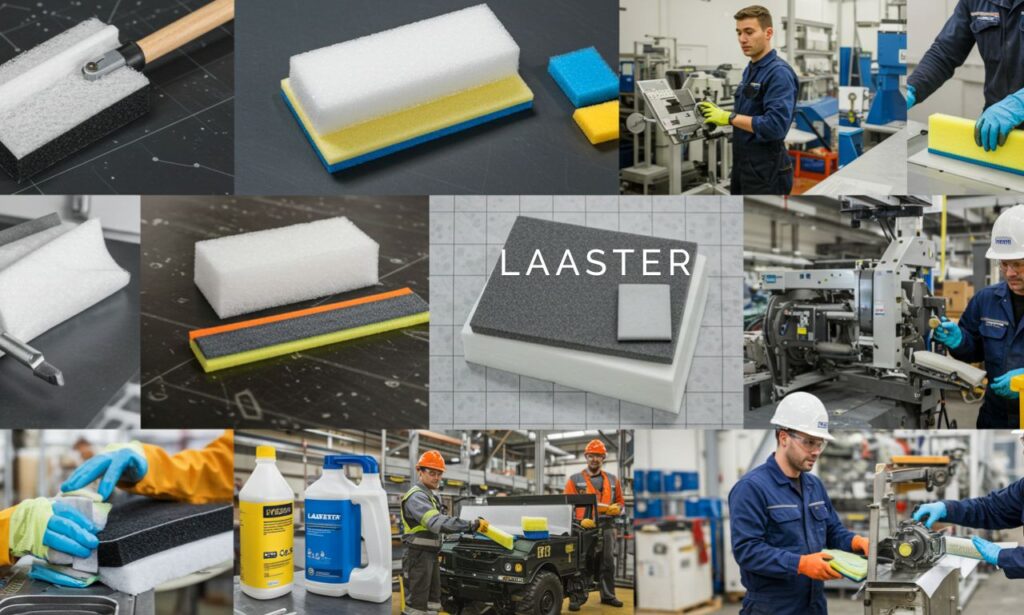The term “laaster” can refer to different concepts depending on the context and language. In Norwegian and Dutch, “laaster” (or laster) generally relates to loading, burdens, or loads—most commonly associated with transportation, logistics, and machinery. It can describe both the object being transported and the vehicle or device doing the work.
In English, while the word “laaster” isn’t officially recognized as standard, it is sometimes used (incorrectly or informally) to describe a device or machine that lifts or carries heavy loads, possibly confused with terms like loader or lifter.
This article explores the various interpretations and uses of laaster, its significance in everyday work environments like construction or warehousing, and how it contributes to safe, efficient handling of materials.
The Meaning of Laaster in Different Contexts
1. Logistics and Transportation
In this context, laaster refers to cargo or load—anything that is being transported from one place to another. It could include:
-
Shipping containers
-
Construction materials
-
Retail stock
-
Heavy machinery parts
A laaster vehicle would be one used to transport or lift such cargo, like:
-
Trucks
-
Forklifts
-
Cranes
-
Loaders (e.g., front-end loaders in construction)
Understanding the type and weight of a laaster is critical for safety regulations, logistics planning, and equipment compatibility.
2. Construction and Industrial Use
On construction sites, a laaster can refer to:
-
A lifting device or apparatus used to move heavy items (similar to hoists, lifts, or cranes)
-
Attachments used on machines like tractors or skid steers to load or carry materials
-
Payload units, such as buckets or lifting forks
These are essential for handling:
-
Cement bags
-
Steel beams
-
Earth and gravel
-
Bricks and blocks
Using the correct laaster ensures efficient workflow and minimizes injury risks.
Types of Laaster (Load-Carrying Equipment or Mechanisms)
1. Manual Load Carriers
These are typically non-powered devices used in small-scale settings like warehouses or delivery operations:
-
Hand trucks
-
Dollies
-
Pallet jacks
-
Push carts
They are simple to operate but limited in capacity and scope.
2. Powered Loaders and Lifting Equipment
These are mechanized or motorized machines designed to handle much heavier and more complex loads:
-
Forklifts – for moving pallets in warehouses
-
Front loaders – for lifting soil or rubble in construction
-
Backhoe loaders – for both digging and transporting material
-
Telehandlers – capable of lifting loads to higher levels
-
Boom lifts – mainly used for lifting personnel and tools in elevated work
Each type of laaster is designed with specific capacities and functions.
3. Vehicle-Mounted Loaders
Some trucks come with built-in loaders or cranes used for self-loading and unloading:
-
Garbage trucks
-
Flatbeds with hydraulic arms
-
Log trucks with grab claws
These are commonly seen in industries like forestry, sanitation, and freight.
The Importance of Load Management (Laasting)
1. Safety
Proper use of laaster equipment and techniques is essential to avoid accidents, especially in environments involving:
-
Heavy loads
-
Elevated work
-
Narrow operating spaces
-
Shifting cargo
Overloading a laaster or using the wrong equipment for the job can lead to:
-
Equipment failure
-
Injuries to workers
-
Damage to property
This is why every load must be calculated for weight, balance, and compatibility with the carrier or lifting tool.
2. Efficiency and Productivity
Using the right laaster tools improves operational flow by:
-
Reducing manual labor
-
Speeding up loading/unloading times
-
Minimizing worker fatigue
-
Allowing for better logistics and inventory control
In industries like warehousing, construction, and delivery services, optimized loading systems directly impact profitability.
3. Compliance and Regulations
In most countries, there are strict regulations on:
-
Load limits
-
Worker training for operating load-bearing machinery
-
Routine inspections and maintenance of lifting equipment
Employers must ensure that every laaster or loading activity meets occupational health and safety standards, including:
-
EN/ISO standards (Europe)
-
OSHA regulations (USA)
-
CE marking for compliant machinery
Laaster in Agriculture
In agricultural settings, laaster equipment is often used for:
-
Moving hay bales
-
Loading feed into silos
-
Transporting harvested crops
-
Clearing debris
Farmers may use tractors with front-end loaders, telehandlers, or bucket lifts to handle large volumes of material efficiently.
Laaster in Maritime and Port Operations
Ports and shipyards rely heavily on laaster systems to:
-
Load cargo onto ships
-
Unload containers
-
Transport goods between docks and storage areas
Specialized laaster equipment includes:
-
Container stackers
-
Shipboard cranes
-
Mobile harbor cranes
-
Reach stackers
Because of the sheer size and weight of maritime cargo, precision and stability in laaster equipment are critical.
Future Trends in Load-Carrying Technology (Smart Laaster)
With technology advancing rapidly, laaster systems are becoming more:
1. Automated
-
Self-driving forklifts
-
Robotic warehouse loaders
-
Autonomous container handling systems
These systems help reduce labor costs and increase speed.
2. Digitally Monitored
IoT (Internet of Things) sensors are now used to:
-
Monitor load weight in real time
-
Track load movement
-
Alert operators to imbalance or stress
-
Integrate with warehouse software for logistics optimization
3. Eco-Friendly
Electric loaders and hybrids are becoming more common as industries shift toward greener operations, especially in indoor or noise-sensitive environments.
Conclusion: Why Laaster Systems Matter
Whether you’re managing a warehouse, operating a construction site, working on a farm, or running a logistics business, laaster systems are vital to safety, efficiency, and productivity. Choosing the right equipment, ensuring proper training, and maintaining compliance with safety regulations are key to successful material handling.
As industries continue to evolve, the demand for smart, sustainable, and user-friendly laa-ster solutions will only grow. Understanding the basics today prepares individuals and businesses for the logistics challenges of tomorrow.







